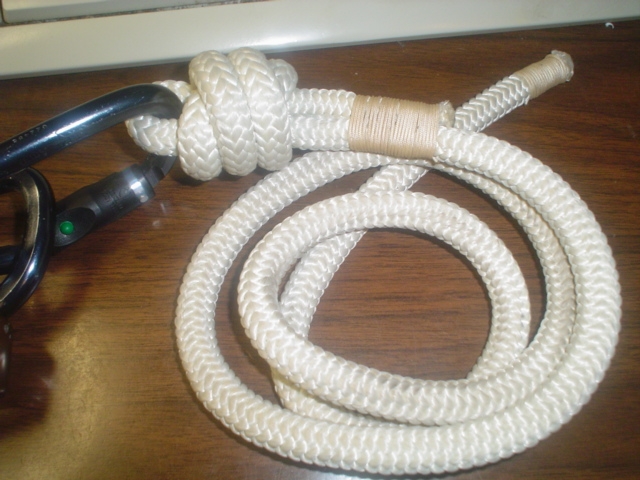thanks for your opinion... in this application whipping (optional) is indeed used to secure a permanent bend. triple fisherman is the only knot that I would use without a backup knot for a lifeline.
here's a picture showing a split tail properly terminated. triple fisherman naturally cinches down to meet current requirements. this is my solution for a compact termination knot without going with a splice.
note how triple fisherman is tied symmetrical and set to form a perfect knot. this is part of the quality control process one can use to determine if knot is tied properly.
disclaimer: not responsible for anything. bad information can get you killed. never depend only on information from internet. find a qualified instructor to learn from.

here's a picture showing a split tail properly terminated. triple fisherman naturally cinches down to meet current requirements. this is my solution for a compact termination knot without going with a splice.
note how triple fisherman is tied symmetrical and set to form a perfect knot. this is part of the quality control process one can use to determine if knot is tied properly.
disclaimer: not responsible for anything. bad information can get you killed. never depend only on information from internet. find a qualified instructor to learn from.

I think the whipping adds a LOT of security, and if done well, should be at least as secure than any secondary backup knot. Any actual force trying to pull the tail out of the whipping is always going to be a very small fraction of the force on the loaded side of the knot. If the whipping can supply that much force, then it is bullet-proof. But of course no one is going to go the whipping route except for a permanent installation.
Last edited:


























































